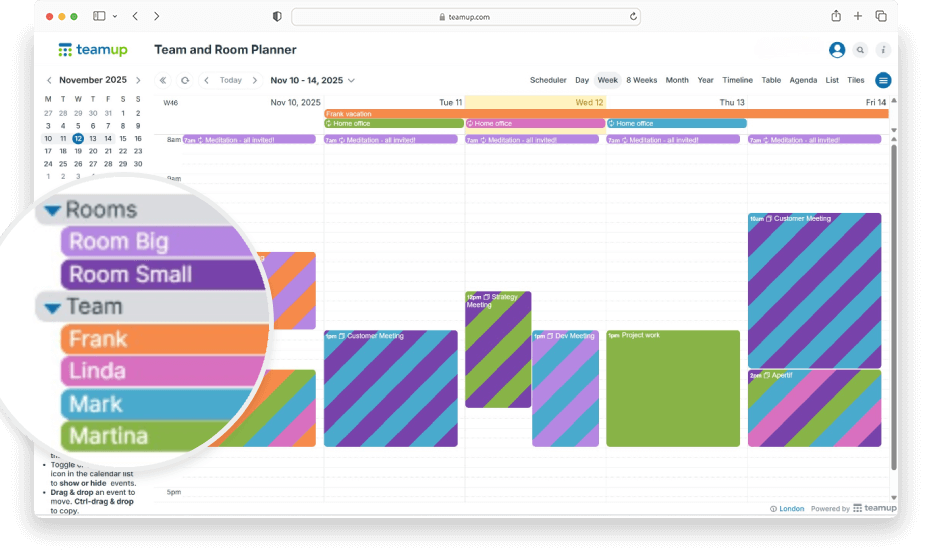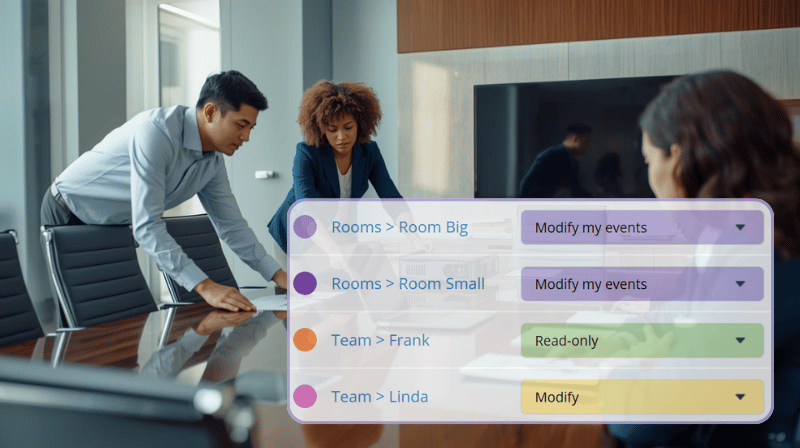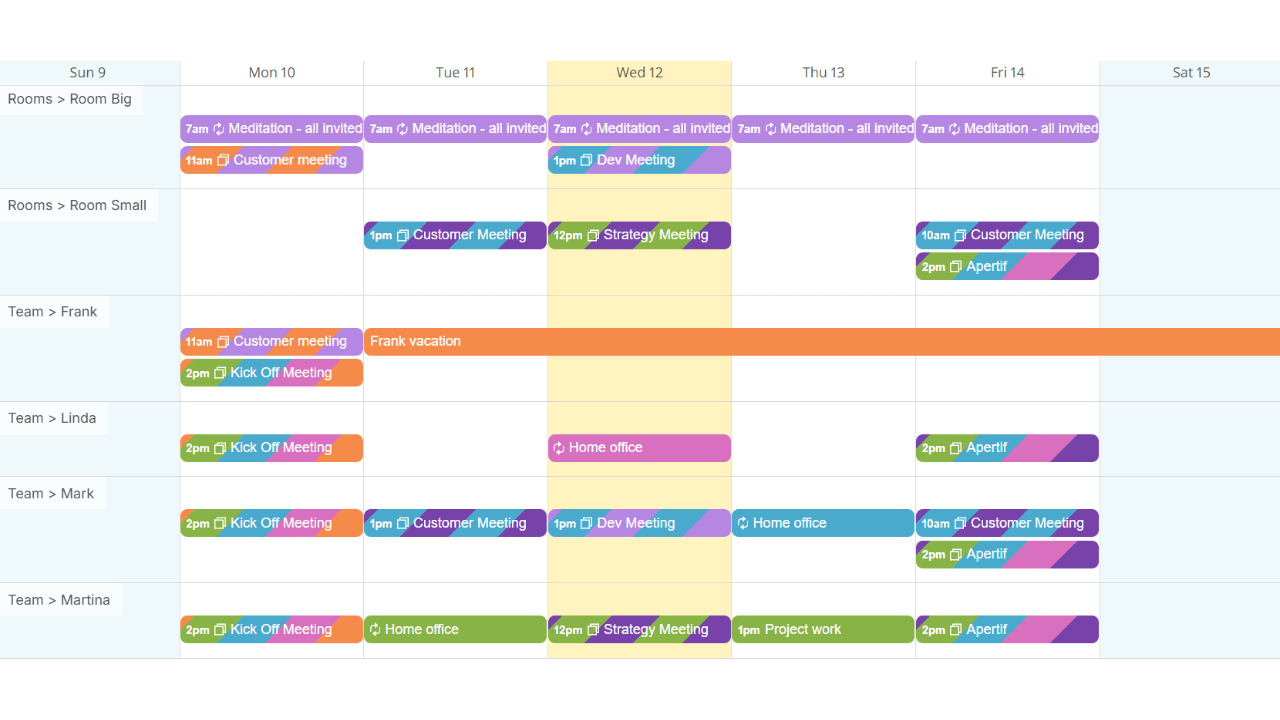There are many cases where teams need to share a resource or space, like meeting rooms, equipment, vehicles, studios, or training areas. Booking shared resources shouldn’t be complicated — but it often is. The challenge is to make scheduling easy for everyone while keeping the process visible, efficient, and conflict-free.
Why booking shared resources gets complicated
When there’s no shared, up-to-date view of resource availability, scheduling becomes slow and often frustrating for everyone involved.
For example, a small team trying to book shared meeting rooms needs to know which rooms are available at any given time. Without a shared view of availability, they have to check in, wait for confirmation, and put their plans on hold until they hear back. Simple scheduling tasks end up taking longer than they should.
For the office administrator, the process isn’t any easier. They have to manually check which rooms are free, approve or adjust bookings, and update others when plans change. With multiple requests coming in by email or chat, it’s easy to overlook overlaps or double-bookings. When schedules shift at the last minute, it becomes difficult to reflect changes in real time: Rooms may sit unused while others scramble for space.
The solution: One calendar, many options
Teamup brings every shared resource into one clear, shared calendar with real-time visibility, self-booking options, and built-in safeguards that keep scheduling simple and conflict-free.
Organize and view shared resources
This is how you can organize and view shared assets in Teamup:
- Assign to each resource its own sub-calendar, color-coded.
- Use folders to group resources by location, size, capacity, or type, and add custom event fields to events if you want to include extra details.
- Disallow overlapping events automatically to prevent double-bookings.
Self booking with control
You can also allow users to book the resources they need safely and independently, while keeping oversight in place:
-
Granular access permissions let you decide who can view, add, or modify events.
-
For each team member, you can choose to display only their own booking details and show other bookings as reserved slots, without details.
-
Change notifications keep both users and administrators informed of new or updated bookings in real time.
Use Case: Room Booking and Team Availability
A small team shares two rooms and needs to coordinate both staff availability and room reservations. With Teamup, they can organize everything in one shared calendar. Here’s how to set this up.
With everything connected in one shared view, any update on the calendar syncs instantly: Everyone sees the same schedule in real time.

Click to enlarge: Each team member and room has its own sub-calendar, grouped under folders for easy overview.
Flexible access permissions ensure everyone can book what they need without making accidental changes. They can be updated anytime as needs evolve. In this example, Linda can add events and modify only the ones she created in the Rooms calendars. She can make changes on her own sub-calendar, but can only view her colleagues’ events — she can’t add or modify anything on their calendars.
You can adjust calendar settings such as default calendar resolution and default calendar view. Among the different calendar views, the Timeline view displays each room and team member’s schedule in parallel. This makes it easy to see who’s available and which room is free.
Make shared resources easy to book
When everyone can see what’s available and book securely in real time, managing shared resources becomes simple and efficient.
👉 Try it out: Explore the Team and Room Planner demo calendar or create your own shared resource calendar.





